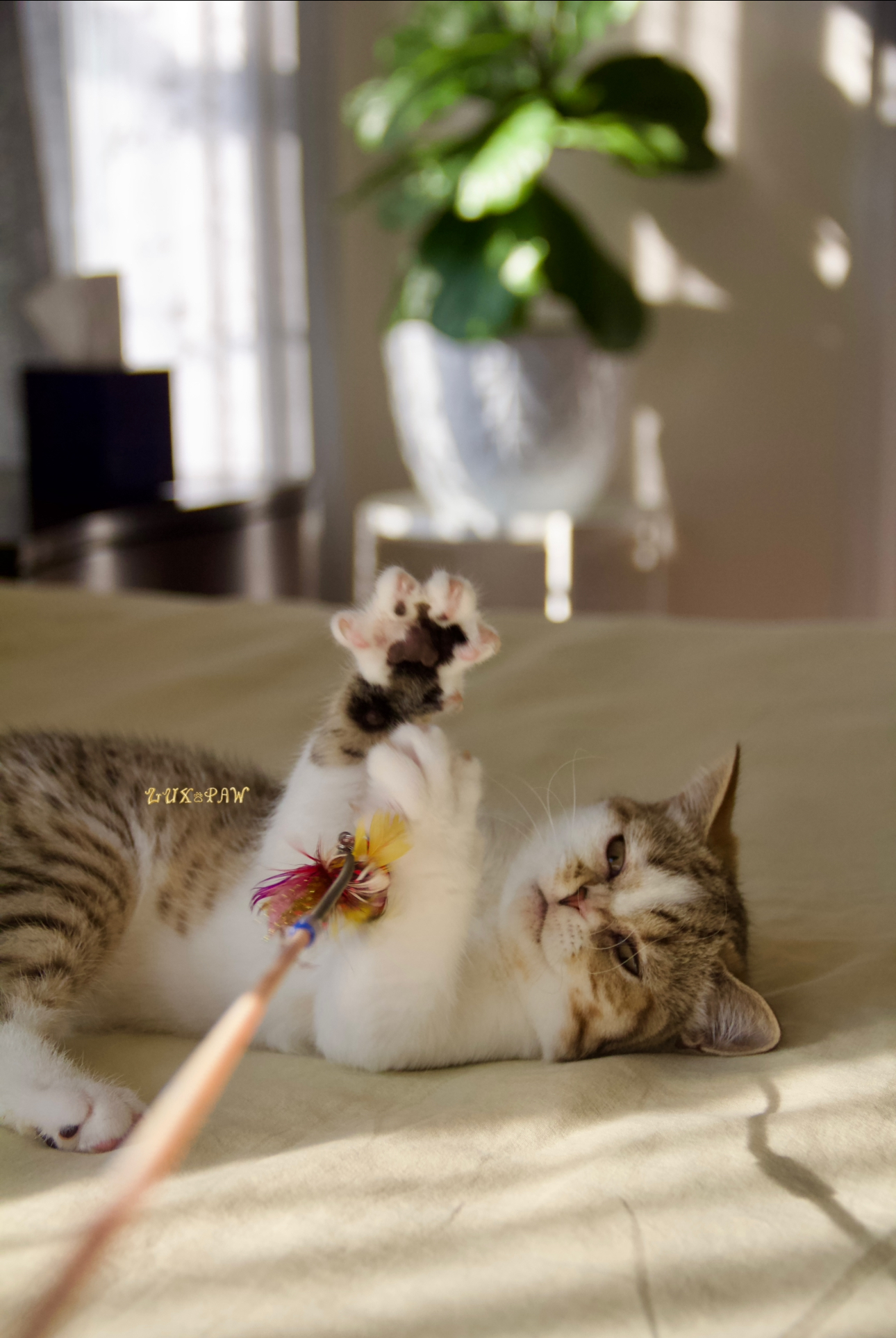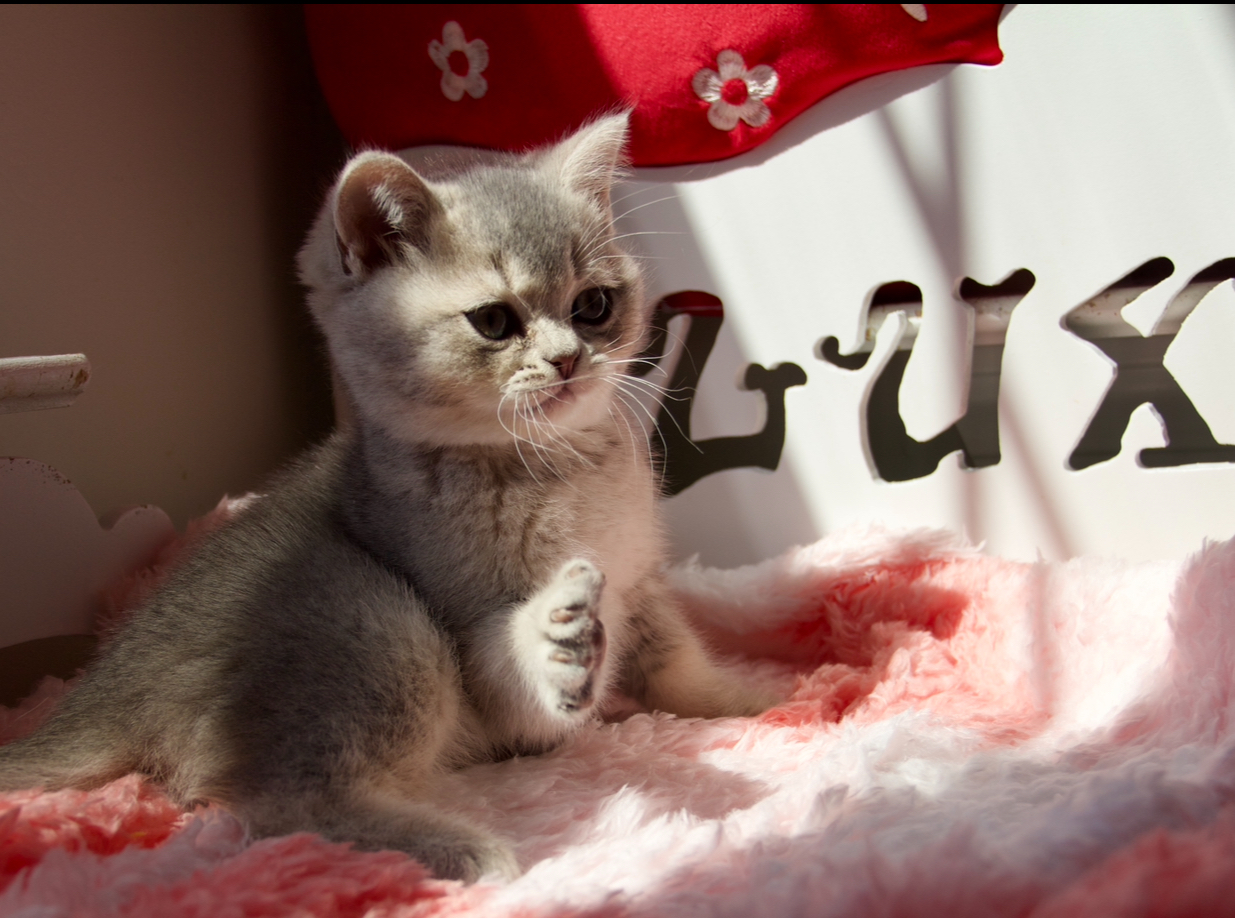One of the most striking and sought-after traits in certain British Shorthair and Longhair cats today is blue eyes. But not all blue-eyed cats are created equally, and within the British cat world, there’s a specific genetic explanation behind this trait. If you’ve been wondering why some British cats have blue eyes and what “DBE” (Dominant Blue Eyes) actually means — this article will answer it all.
What Does DBE Mean in British Cats?
DBE stands for Dominant Blue Eyes — a gene mutation responsible for giving cats naturally deep, striking blue eyes regardless of coat color. This gene is dominant, meaning only one parent needs to carry it for it to potentially pass on to offspring.
DBE is different from the blue eyes you might see in colorpoint breeds like Siamese or Ragdolls. In those breeds, blue eyes are linked to the colorpoint gene, which suppresses pigment in certain areas of the body (eyes included). With DBE, the blue eye color occurs independently of coat pattern or colorpoint genes.
In British Shorthair and Longhair breeding, DBE is still considered relatively new and rare — and highly desirable.
How Does DBE Work Genetically?
The DBE gene affects melanocyte migration during embryonic development. In simple terms, melanocytes are the cells responsible for pigment. In cats with DBE, the melanocytes fail to fully develop in the iris, leaving the eye a clear, striking blue.
The DBE gene is typically written as Dbe/ or DBE/ in genetic shorthand. Because it’s dominant, it only takes one parent to carry the gene for kittens to have a 50% chance of inheriting blue eyes.
✅ Heterozygous (Dbe/dbe): Will express blue eyes and pass the gene to ~50% of kittens.
⚠️ Homozygous (Dbe/Dbe): Homozygosity in DBE cats is under study and may lead to issues such as eye deformities, squinting, or other ocular health concerns. Many breeders avoid breeding DBE to DBE for this reason.
DBE vs. Odd-Eyed and Other Blue-Eyed Cats
You may wonder: how is DBE different from odd-eyed cats or other blue-eyed British cats?
| Type | Cause | Notes |
|---|---|---|
| DBE | Dominant Blue Eye Gene | Blue eyes regardless of coat; dominant gene |
| Colorpoint | Colorpoint Gene | Blue eyes only in colorpointed cats |
| Odd-Eyes | White spotting gene | Typically one blue eye, one amber/copper |
| White Cats | Epistatic white gene | Blue eyes possible; hearing issues common |
British cats with white coats and blue eyes may not be DBE at all — it could simply be linked to the KIT gene (white spotting), which is unrelated to DBE. Similarly, cats with colorpoint coats have blue eyes due to the temperature-sensitive albinism gene, not DBE.
Why Is DBE Popular in British Shorthair Breeding?
Blue eyes have long been considered exotic and desirable, particularly because traditional British Shorthairs are known for gold, copper, or green eyes. DBE adds a new layer of beauty and uniqueness without sacrificing the breed’s hallmark round, plush look. (This look is still under development in DBE cats)
Key reasons DBE is popular:
- Modern trend: blue-eyed cats are in high demand for photography and social media.
- Aesthetic appeal: striking blue eyes on solid colors, bicolors, and more.
- Unique: not widely available, adds exclusivity.
Challenges and Considerations for Breeders
While DBE offers beauty, breeders need to handle this gene responsibly:
✅ Best Practices:
- Avoid DBE-to-DBE pairings.
- Test cats to ensure you understand their genetics (especially with whites, colorpoints, or odd-eye backgrounds).
- Breed to solidify type, not just chase eye color.
- Prioritize health and temperament first.
🚫 Risks of Poor Practices:
- Potential ocular issues in homozygous kittens.
- Oversaturation of poor-quality DBE lines can weaken the breed’s type.
Will DBE Affect the Coat Color?
No. DBE affects only eye color. Coat color genetics (blue, lilac, cream, chocolate, cinnamon, black, etc.) are determined by other genes like dilution, chocolate, and cinnamon — not DBE.
You can have:
- Solid cats with blue eyes (rare outside DBE lines).
- Bicolor cats with blue eyes.
- Tortoiseshell cats with blue eyes.
Are DBE Cats Recognized by Registries?
Recognition depends on the registry:
- TICA acknowledges DBE in certain contexts.
- CFA traditionally does not have DBE as a focus for British Shorthairs.
- FIFe and others may vary.
However, the pet and boutique breeder market shows strong demand for DBE kittens, regardless of registry acceptance.
Who Should Consider a DBE Kitten?
DBE kittens are ideal for families looking for something extra unique in appearance. They are not typically bred for show (yet) but make exceptional, beautiful companions with their mesmerizing blue eyes.
Summary: Key Facts About DBE in British Cats
✔️ Dominant gene: only one parent needed
✔️ Produces clear, vibrant blue eyes on any coat
✔️ Not related to white or colorpoint genes
✔️ Requires responsible breeding
✔️ Highly sought-after for its rarity and beauty
My Personal Experience as a DBE Breeder
As a breeder working with the DBE (Dominant Blue Eye) program, I would like to share a few thoughts based on my own experience. Although I have not been breeding DBE lines for very long, it’s important to note that DBE itself is still a very new and rare gene within the British Shorthair and Longhair world. It has not been around long enough for there to be substantial long-term studies, solid health statistics, or official breed standards dedicated specifically to this trait.
There is still a great deal of work to be done within DBE programs to bring these cats closer to the classic British breed standard in terms of type, body structure, and overall quality. At this stage, DBE cats are very much still in the process of development and refinement, and I believe we are only at the beginning of this journey.
One thing I have personally noticed is that DBE kittens with visibly blue eyes tend to be more prone to minor eye issues compared to standard British kittens. They often experience mild eye infections, increased sensitivity, and general eye irritations more easily. Their eyes seem to be more reactive and require a little extra care and maintenance. Future owners of DBE kittens should be aware of this and prepared to be diligent in keeping their kitten’s eyes clean and healthy to prevent potential issues from developing over time.
Aside from this eye sensitivity, I have not observed any other significant health concerns tied directly to the DBE gene so far. However, as someone who raises kittens from birth through four months of age (and sometimes beyond), I can confidently say that the eye issues are the most noticeable difference compared to my non-DBE kittens.
It’s also worth remembering that DBE is a man-made genetic mutation. As with anything selectively developed by humans rather than naturally occurring, there is no such thing as perfection. We must approach these breeding programs with caution, responsibility, and transparency about both their beauty and their challenges.
At Luxury Kittens USA, we proudly work with a carefully selected DBE line alongside our classic British lines to offer our clients a variety of stunning kittens. Whether you’re enchanted by vivid blue eyes or prefer the classic copper gaze, we believe every cat deserves to be cherished for its unique beauty and character.
If you’re interested in a DBE kitten, please visit our website’s Waiting List section for information on how to join.
With Love, Alena.



